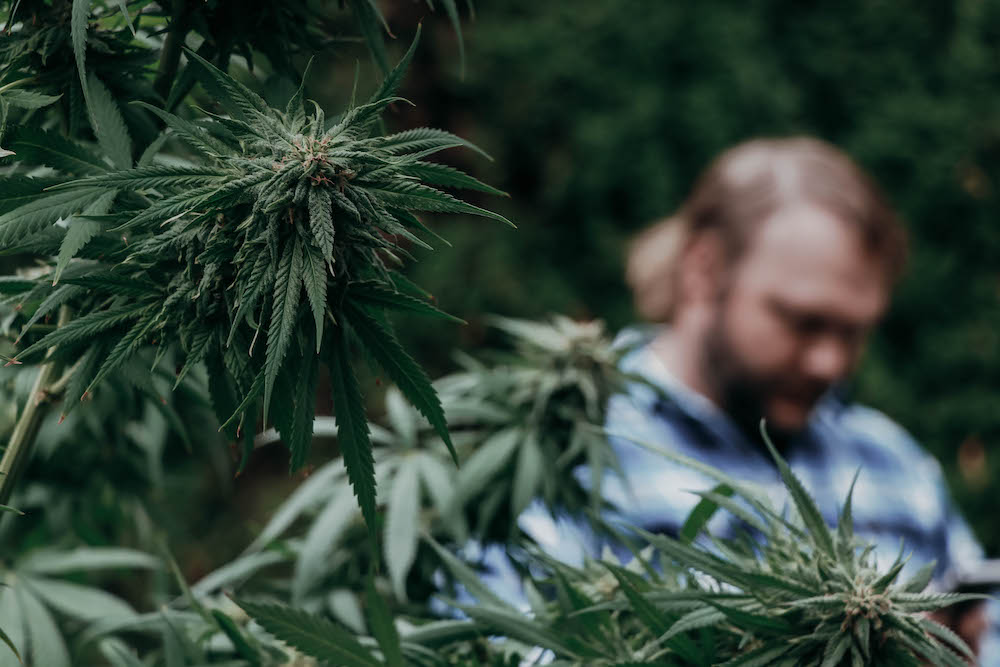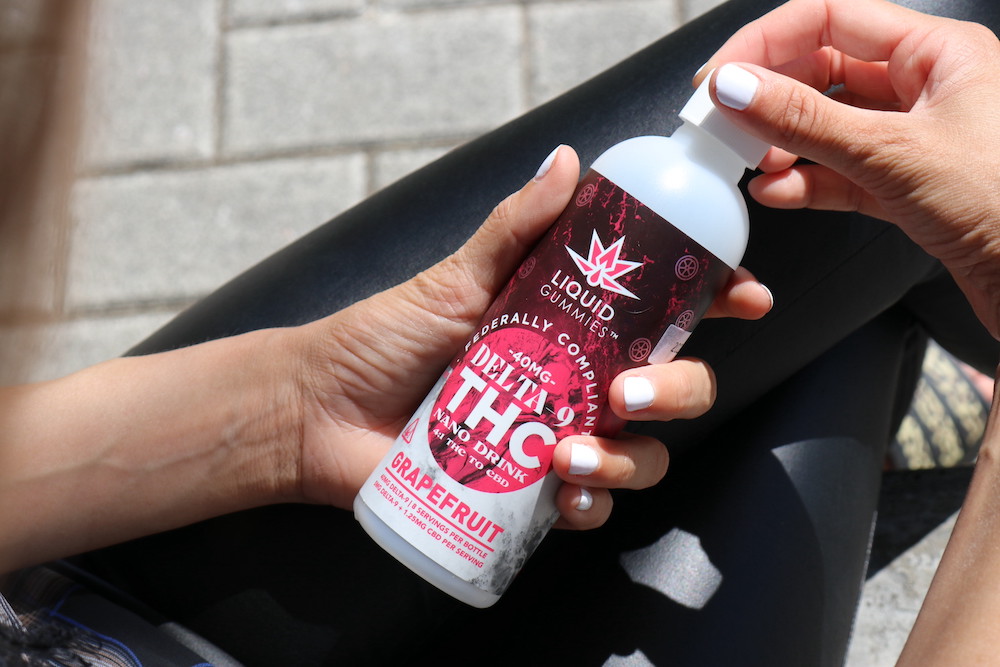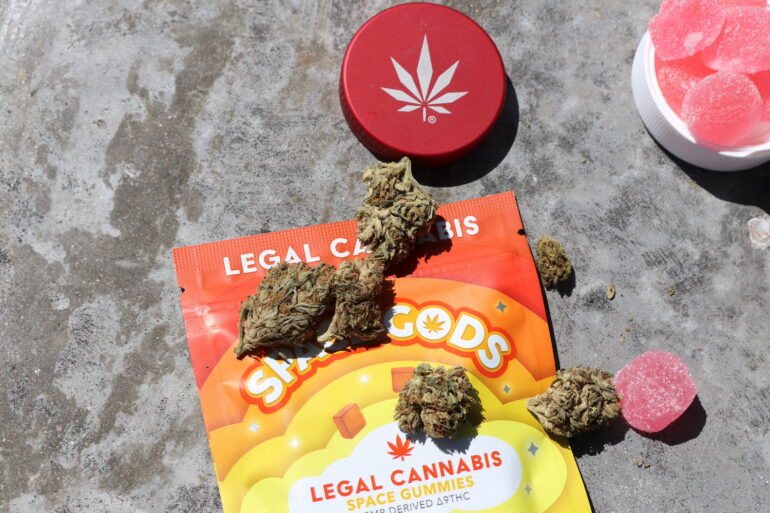CBD Oracle’s lab study on hemp delta-9 THC products was published in the Journal of Cannabis Research on July 26th, finding that 26.5% of hemp delta-9 products are illegally sourced from marijuana plants and 49% of products used delta-9 THC produced by converting CBD.
The study was conducted in partnership with InfiniteCAL, who analyzed 53 popular hemp delta-9 products for potency and safety, as well as performing tests to determine where the THC in the products was actually sourced from.
The full paper is available without a subscription, but here’s a quick run-through of what the study did and what it found.
What the Study Did
The research is pretty straightforward in terms of what it did. The CBD Oracle team ordered 53 hemp delta-9 THC products, generally looking for the most popular products from reputable companies in the area. Then the products – mainly edibles – were sent to InfiniteCAL, who tested them for potency and used the cannabinoid profile to determine the most likely source of the THC they contain.
Although the lab analysis forms the backbone of the paper, the research also considered other factors, such as whether there were warning labels on the products, whether the companies verified age before purchase or on delivery, and whether they used child-proof packaging.
Should You Trust Hemp Delta-9 THC Products? Key Findings
Overall, the study found that the labels on delta-9 THC products are not very accurate and that it’s likely that the product contains delta-9 that was not naturally produced by a hemp plant.
Specifically, some key results include:
- They advertised an average of 12.98 mg of THC per serving, more than would be allowed per serving under regulated marijuana programs.
- 51/53 products were under the 2018 Farm Bill limit of 0.3% delta-9 THC by dry weight.
- 66% of products differed from their advertised dosage by more than 10%, usually offering less delta-9 THC than they claimed.
- 10 products were randomly-selected to be tested for pesticide residue, solvents, heavy metals, microbial contamination, mycotoxins and foreign matter. All of the products were free from these impurities.
- While 84.9% of products offered a Certificate of Analysis (COA), most of these didn’t include tests for impurities. In total, 75.5% of products were not proven to be free from impurities by their manufacturer.
- 84.9% of products didn’t perform substantial age verification at checkout, and only one required an adult signature on delivery.
- 81.1% of products didn’t have a child-resistant container.
- 49% of products used delta-9 THC produced by converting CBD, creating the THC in the same way delta-8 is manufactured. 26.5% used THC taken from cannabis, which is illegal at the federal level.
We spoke to InfiniteCAL’s lead analyst Susan Andersen and lab manager Dr. Erik Paulson, both authors of the paper, who explained:
“The critical problem this paper highlights is how the regulations are written. They have opened up potential loopholes that manufacturers have been able to capitalize on. This includes the definition of “hemp” being anything with below 0.3% delta-9 THC. Most cannabis edibles sold within the legal cannabis market are well below that 0.3% delta-9 THC threshold, yet they are still required to pass numerous safety tests. In the “hemp” or black market, producers can capitalize on the fact that their edibles are below 0.3% delta-9 THC so they can bypass all regulated safety testing and taxes and still claim that these are “hemp” products by definition.”
How Can You Tell Where the THC Comes From?

One of the most important results from the paper is that most hemp delta-9 THC products don’t use hemp-sourced delta-9 THC at all. But how did the research determine this?
Dr. Erik Paulson gave us an overview of the process:
“We can identify where the THC comes from by mapping out the identifying peaks within each type of THC source. This has been established through researching papers and theorizing the mechanisms through which these conversions occur, paired with our vast experience seeing thousands of samples and tracking which samples are coming from each source. From this work, we established clear metrics of which peaks are present and in what relative amounts we expect to see them in the different sources of THC.”
If you’re good at chemistry, the Supplementary Information for the paper has all of the details, but the basics are easy to understand.
- There are actually two types of delta-9 THC, trans and cis delta-9, but in high-THC plants, there is almost no cis THC at all. For natural hemp plants, the ratio of trans:cis THC is generally less than 8:1.
- When producers convert CBD to delta-9 THC, there will be some “miscyclization,” and delta-8 THC will be created by mistake. In contrast, natural plants contain very little delta-8. The researchers assumed that samples with more than 1% delta-8 (relative to the amount of delta-9) were created through conversion reactions.
- CBG is an important minor cannabinoid that would be present in natural plants but would be almost entirely absent if most of the THC was created through conversions from CBD. The researchers assumed that samples with less than 1% CBG (again, relative to the amount of delta-9) were unlikely to be sourced naturally.
Combining these three points led the researchers to classify each product as either natural hemp THC, THC converted from CBD or THC sourced from cannabis.
For example, a product with more than 8:1 trans:cis THC is unlikely to be hemp, and if there is more than 1% delta-8 present it’s a sign that there was conversion from CBD (with some “errors” in the process). Finally, if this same product had very little of the CBG that would be present in natural plants, you can be pretty sure that the majority of the THC was actually created in a lab with CBD as a starting point.
This process was created by InfiniteCAL, as Erik pointed out, “The method we have created was developed in-house and is unique to InfiniteCAL, allowing us to make these determinations with great certainty. However, we suspect that a few other labs have noticed the differences in peaks between converted and naturally occurring hemp products and may have their own methods.”
What Does This Mean for the Industry? Why Does It Matter?
The 2018 Farm Bill spawned the dazzling range of hemp products on shelves across the US today, but this bill is set to be updated for 2023. With this in mind, the results of this study underline some crucial points for both lawmakers and the industry overall.
Many Hemp Delta-9 THC Products Aren’t as Legal as They Claim

Firstly, the finding that most hemp delta-9 THC either creates the THC from CBD (in 49% of products) or uses THC from cannabis (26.5%) has wide-reaching implications. Many states, including Colorado, Massachusetts, Hawaii and North Dakota, excluded products created in this way from their definition of “hemp,” in response to delta-8 THC, which is created in the same way. This means 49% of hemp delta-9 products are actually illegal in these states, but this is unlikely to be obvious to stores, consumers, law enforcement or lawmakers.
Susan Andersen explained that this process can be dangerous when manufacturing standards are lax:
“While chemical synthesis can be a useful tool in the pharmaceutical industry, the hemp industry does not currently possess the infrastructure and regulation needed to require the testing to ensure that the acids and reagents used in the reactions are completely absent in the finished product. Additionally, these reactions can create side products that can pose potential health risks, but at this time it is unknown how harmful these side products can be since there have not been long-term toxicology studies performed for these products to assess their safety.”
Additionally, the 26.5% of products which use marijuana-sourced THC cannot legally be sold as “hemp” anywhere. THC present in marijuana is a controlled substance at the federal level, and therefore can’t be sold across state lines or outside of a state-regulated marijuana program. If offending products are identified using a method like the one devised in the paper, this illegal trade can be stopped.
If the THC came from marijuana, sellers would have to deal with the same sentences as others selling controlled substances. In states without legal cannabis, this can vary a lot, for example in South Carolina, selling any marijuana can get you up to five years in prison and up to $5,000 in fines for a first offense. Even in states with legal cannabis like Colorado, sale of cannabis without a license is a level 1 drug misdemeanor, punishable by between 6 and 18 months in prison and between $500 and $5,000 in fines.
You might think that selling some cannabis-derived high-THC products outside state-licensed dispensaries isn’t a big issue, but when you start to look at the financial situation for dispensaries, the problems become clear. Using Colorado as an example, the state earned over $325 million in taxes in 2022, from over $1.76 billion in sales. However, for each dispensary, the costs to start-up range from $150k to $2 million, as well as ongoing costs like annual licensing, testing fees, staff, rent and so on.
In contrast, cost estimates to start up a hemp store generally fall below $100k. This is great for companies selling CBD oils, but if your products are as intoxicating as those sold by the regulated cannabis industry (with less tax to pay and fewer regulations), then the practical consequence is less tax revenue for the state and an unfair marketplace for your competition. And this is before we discuss issues from the consumer perspective, such as less assurance that products are safe and offer what they claim to.
The Hemp Delta-9 Industry Lacks Critical Oversight
Secondly, the paper draws attention to many different consequences of the lack of oversight in the industry, which lawmakers could correct this year. Imagine you buy 10 delta-9 THC products that are currently for sale online. Based on the statistics in the study:
- Only three would contain the amount of THC it says on the label
- Only one or two would have verified your age before you bought
- None of them would require an adult signature on delivery
- Only two or three would have been tested for impurities before being sold (but it’s likely that they’d all pass the test)
- Only three of them would have the cannabis universal symbol to show that they’re intoxicating
- Two wouldn’t contain any warning label at all
It’s important to remember that these are probably not bad actors, cynically creating unsafe products for profit, but they are often operating in the absence of clear regulations and with no requirements other than those imposed by consumers. The Farm Bill created the market, but it did not address the issue of regulation of finished products, vaguely leaving this up to the FDA and state agencies. This is the key oversight shown by the paper: consumers are being sold products which do not meet the same basic standards we’d expect of intoxicating products in legal states.
RELATED: ATACH Calls on Congress to Take Action on Intoxicating Hemp in 2023
Susan identified the same issues when we spoke to her about the paper:
“Legally allowing these products to be sold because the delta-9 THC is below 0.3% makes it possible for these producers to bypass any safety testing to get their products on the shelf, which, again, poses a public health risk to unsuspecting consumers. Any action on the lawmaker’s part needs to start by closing the loopholes that allow products that have functionally the same effect and the same compounds as state-regulated cannabis/marijuana products to be put on the shelves with a fraction of the requirements needed for products on the legal cannabis market.”
Literally, as the title of the paper alludes to, the specific wording used in the Farm Bill made the demarcation between cannabis and hemp effectively meaningless. We understand that some adults want to get high, and in regulated cannabis industries, states control this by setting limits for things like the amount of THC it’s reasonable to sell someone as a single serving, and mandating that products must be proven to be safe. However, hemp often has no such rules but includes products even more intoxicating than edibles in legal states.
Conclusion: Hemp Delta-9 THC Should Be Available, But Safe
The paper concludes that the industry has a lot of work to do in some key areas, and calls on lawmakers to establish common-sense policies like requiring safety testing for all hemp products and preventing sales of intoxicating hemp to youth. It remains to be seen whether politicians will step up and correct the mistakes of the 2018 Farm Bill, and how states will respond to the revelation that many products on store shelves are actually illegal, but if they don’t, the problems the paper identified will persist.
Dr. Erik Paulson addressed this issue too, noting that it’s more likely that lawmakers will focus the Farm Bill on cultivation and make new legislation for products:
“I have personally spoken to staffers in Congress that are responsible for the drafting of the update to the Farm Bill in 2023, and it was reiterated to me that the Farm Bill is only meant to regulate the cultivation of hemp, not hemp products. While we would appreciate verbiage in the Farm Bill that provides guidance for extracted cannabinoids and products derived from hemp, it is more likely that we will see standalone legislation to address this regulation of this industry.”
We’ve covered the key points here, but the full text has all of the details if you want to know more about the research and the hemp delta-9 THC industry as a whole.
